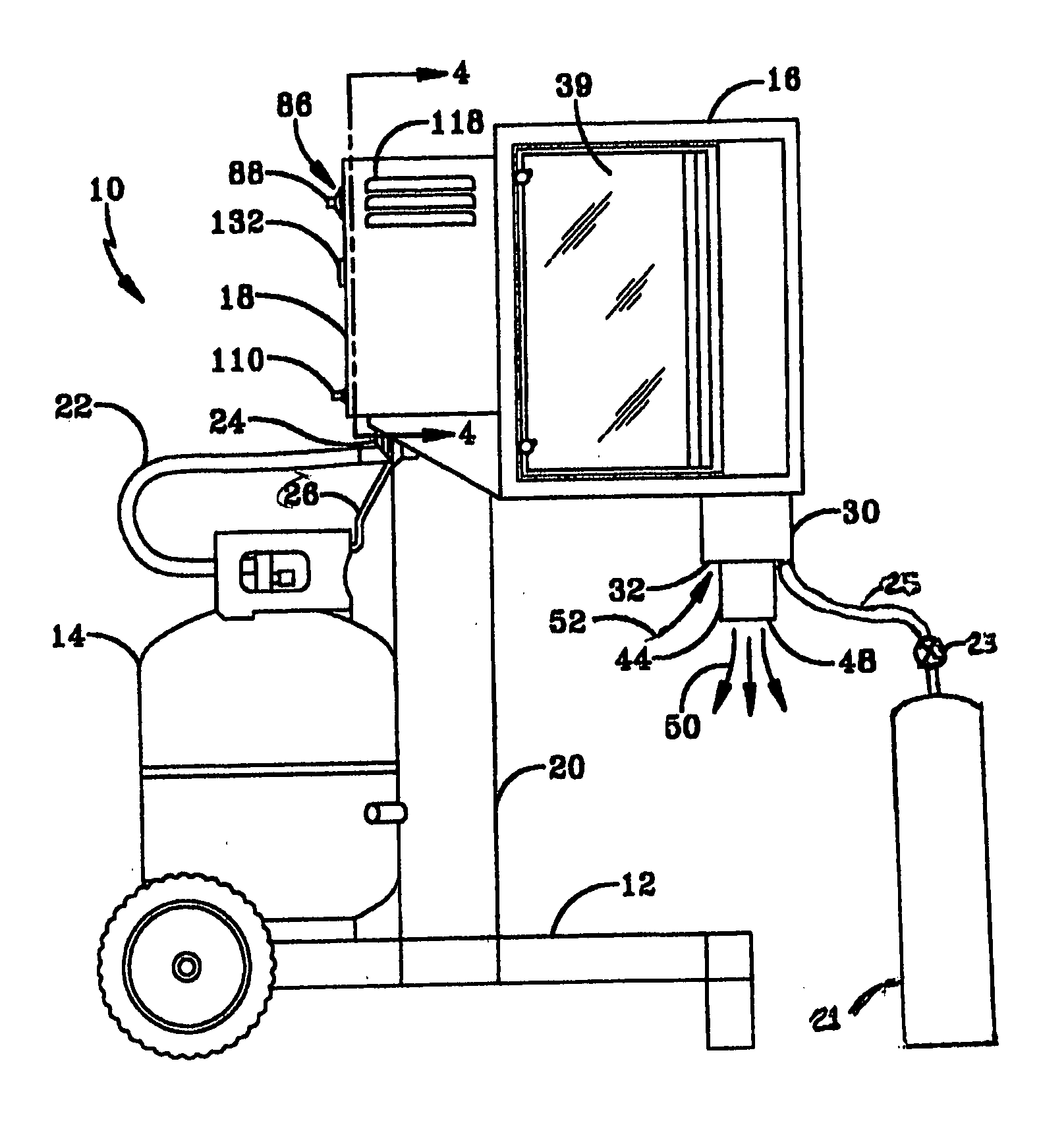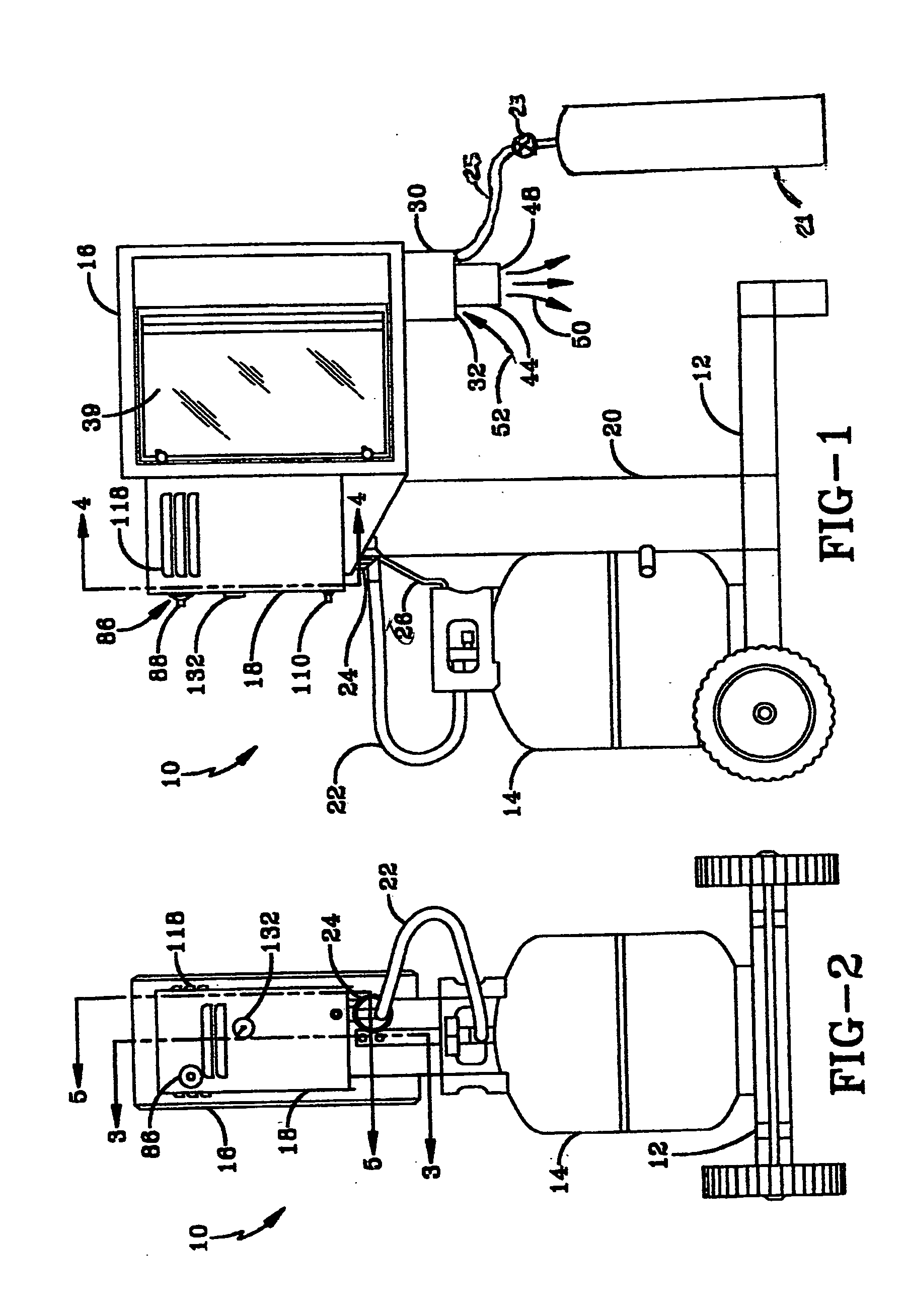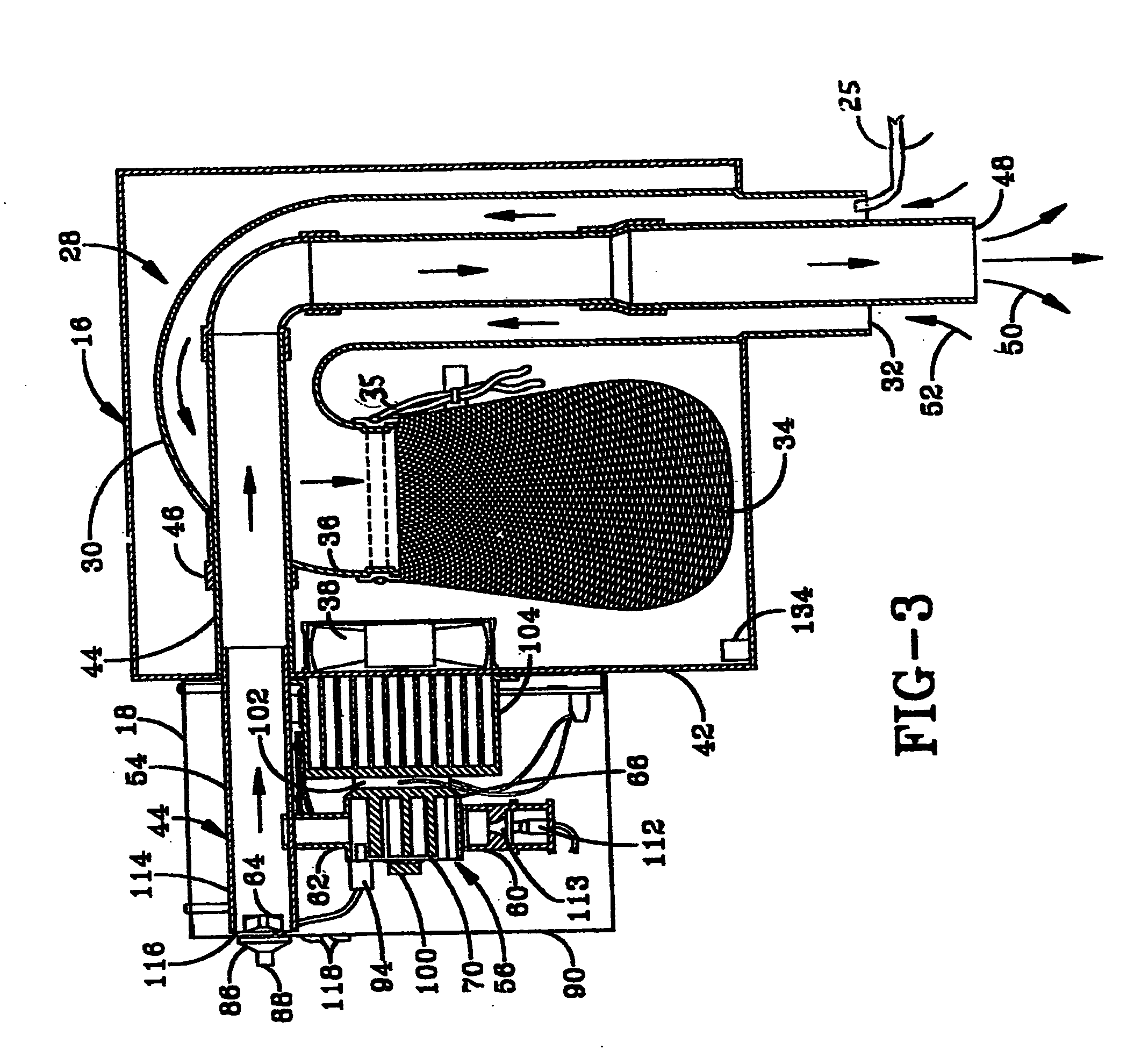Attractant compositions and method for attracting biting insects
a technology of compositions and insects, applied in the field of attractive compositions or systems for attracting mosquitoes, can solve the problems of inability to easily place apparatus and devices in remote locations, needing constant replacement, and large volume of canisters
- Summary
- Abstract
- Description
- Claims
- Application Information
AI Technical Summary
Benefits of technology
Problems solved by technology
Method used
Image
Examples
example 1
[0062] These tests were conducted in the Danbury, Conn. area employing American Biophysics Corporation Mosquito Magnet® (Liberty model) traps of the general type trap previously described hereinbefore that release carbon dioxide in an amount within the range of from about 250 to 500 ml / min. Two traps were employed in adjacent areas about 75 feet apart. To establish a baseline control the traps were operated in the two areas over five days. The trap in area 1 (Trap 1) caught 37% of the mosquitoes caught, and the trap in area 2 (Trap 2) caught 63% of the mosquitoes caught. These control evaluations establish that area 2 is the more active mosquito area and provides baseline (relative) catch percentages for the two areas. Tests were then run where Trap 1 was modified to include a flow of certain specified ml / min of 20 ppm NO2 in nitrogen gas, from a pressurized gas cylinder 21 in the manner described before, in addition to the established flow of carbon dioxide, and while Trap 2 had no...
example 2
[0063] These tests were conducted in the Danbury, Conn. area employing American Biophysics Corporation Mosquito Magnet® (Liberty model) traps of the general type trap previously described that release carbon dioxide in an amount within the range of from about 250 to 500 ml / min. The traps also released octenol as an attractant. Two traps were employed in adjacent areas about 75 feet apart. To establish a baseline control the traps were operated in the two areas over nine test periods. The trap in area 1 (Trap 1) caught 47% of the mosquitoes caught, and the trap in area 2 (Trap 2) caught 53% of the mosquitoes caught. These control evaluations establish that area 2 is the more active mosquito area and provides baseline (relative) catch percentages for the two areas. Tests were then run where Trap 2 was modified by addition of certain specified ml / min of 20 ppm NO2 in nitrogen gas while Trap 1 remained unmodified. The results of the runs are set forth in Table 2
TABLE 2Ml / min of 20 ppmP...
example 3
[0065] These tests were run with a modified American Biophysics Corporation Mosquito Magnet® (Liberty model) traps of the general type trap previously described. Propane was not used and no heat generated and the fans were modified to be powered by an outside electrical power source. The control trap was a standard American Biophysics Corporation Mosquito Magnet® (Liberty model) trap. Octenol was present in each trap as an additional attractant. Again these tests were run in the Danbury, Conn. area in two adjacent test areas about 75 feet apart. Identical traps were run in areas 1 and 2 as controls to establish an attractiveness baseline. Trap 1 in area 1 caught 65% of the mosquitoes caught and Trap 2 in area 2 caught 35% of the mosquitoes caught. Trap 2 was maintained unmodified as a control in the test runs, and Trap 1 was modified as described above so that the carbon dioxide output could be controlled by using a pressured cylinder and to add specified ml / min amounts of 20 ppm NO...
PUM
 Login to View More
Login to View More Abstract
Description
Claims
Application Information
 Login to View More
Login to View More - R&D
- Intellectual Property
- Life Sciences
- Materials
- Tech Scout
- Unparalleled Data Quality
- Higher Quality Content
- 60% Fewer Hallucinations
Browse by: Latest US Patents, China's latest patents, Technical Efficacy Thesaurus, Application Domain, Technology Topic, Popular Technical Reports.
© 2025 PatSnap. All rights reserved.Legal|Privacy policy|Modern Slavery Act Transparency Statement|Sitemap|About US| Contact US: help@patsnap.com



